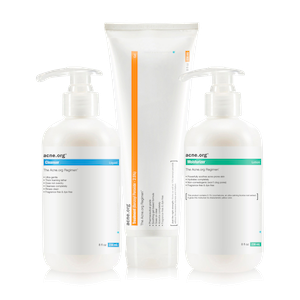Thought this might be of interest to you folks that want something less risky and milder. I didn't really see anything about it on the site:
In this pilot study, the Portrait PSR appeared to be a
safe and effective device for treating facial acne scars.
We report a blinded average of up to 41% improvement in
facial acne scars 6 months after a single high-fluence
treatment with the PSR system. While the magnitude
of improvement that we observed in this study is not as
dramatic as that seen with multipass ablative CO2
laser treatment [7], PSR offers several advantages.
Patients were asked to rate the percentage improvement
in their acne scars at 3 and 6 months using a scale
divided into 10 percentage-point increments. Patients
rated the forehead, right cheek, left cheek, and mouth/
chin separately, and those numbers were averaged in the
analysis. At 3 months, average patient-rated improvement
was 34.2% (range 5“70%). At 6 months, average improve-ment was 33% (range 2.5“90%)
No patients reported drainage orweeping from the treated sites and all erythema had completely resolved by 1 month following the treatment.No serious adverse events occurred during the follow-up period


http://www.drclevens.com/Plasma-versus-CO2.htm
http://www.realself.com/article/the-skinny-plasma-resurfacing
The Plasma Skin Regeneration (PSR) system launched in February 2005 by Rhytec Ltd (Waltham, MA) as the Portrait PSR device at the American Academy of Dermatology meeting is not light-based or radiofrequency (RF). Rather, energy is delivered to the skin surface via nitrogen plasma. Plasma is the fourth state of matter in which electrons are stripped from atoms to form an ionized gas.24 Pulses of ultrahigh-frequency (UHF) RF energy are used to ionize a flow of nitrogen gas, producing millisecond pulses of plasma, with no UHF energy delivered to the skin. The plasma is characterized by a lilac glow transitioning to a yellowish light known as a Lewis-Rayleigh afterglow. This glow is directed, in pulses, through a quartz nozzle held 5 mm from the skin's surface, delivering energy through a 6-mm spot size. Upon impact, the ionized energy is released, causing a localized heating in a controlled, uniform manner without relying on a chromophore mediator. With no target chromophore, the disruptive effect of energy conversion seen when working with high-energy lasers is avoided. The result is a uniform and efficient distribution of energy into the dermis.An important clinical reason for using nitrogen is that it purges oxygen from the skin's surface, so that oxidative carbonization is minimized, eliminating unpredictable hot spots and charring that can produce scarring. The presence of inert nitrogen flowing after the delivery of plasma, combined with the thermal relaxation between pulses, preserves the treated epidermis, thus providing a microenvironment for skin regeneration. The depth of the effect can be varied from superficial epidermis to deep dermis, similar to a CO2 laser, but without vaporization of tissue. The energy can be adjusted from 1 to 4 J per pulse. It is delivered like an airbrush, without contact, applying a series of non-overlapping pulses. Treatment is usually performed under topical anesthesia, but for higher-energy settings, adjunctive oral analgesia is recommended.One unique feature of plasma resurfacing is its nonablative nature. Immediately postprocedure, the stratum corneum and epidermis are retained. Preliminary studies comparing biopsies from CO2 laser“treated skin with PSR-treated skin show that tissue regeneration was much faster with PSR.25 In fact, in the PSR group, by the time the injured epidermis was ready to slough off, there was already a new epidermis forming beneath. These initial studies have led to the idea that there is no open wound period after PSR therapy and that the epidermis essentially acts as a natural biological dressing facilitating quick healing when doing plasma resurfacing.25Plasma resurfacing is approved by the FDA for the treatment of facial rhytides, actinic keratosis, and benign skin lesions (Figs. 8 and ‹and9).9). It has also been used to improve skin tone, texture, and pigmentation. Operators of plasma resurfacing machines also claim to see immediate posttreatment skin contraction in areas of lose, saggy skin, as well as continued improvement of all of the benefits listed above with subsequent treatments.The expected side effects from plasma resurfacing thus far are minimal. The most common side effect is postoperative erythema, which usually subsides by day 3. In essence, by postoperative day 4, a new epidermis has formed, and by day 10, fibroblasts are increased and the tissue remodeling cascade has started. Isolated cases of hypopigmentation and hyperpigmentation have been noted, but no reported cases of patients with permanent pigmentary complications have been published. Currently, plasma resurfacing appears to be a very safe technology; however, long-term follow-up data are not available.
 Acne.org Products
Acne.org Products